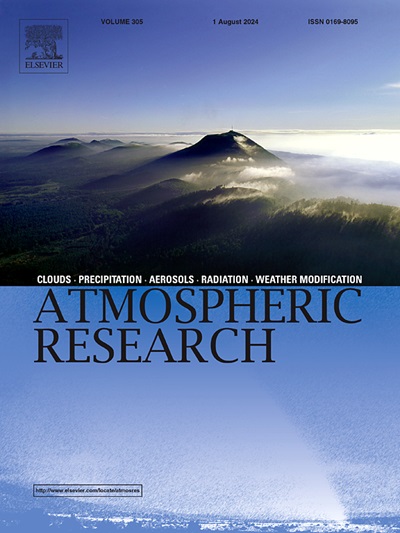Impact of snow cover on the surface energy balance and its contribution to the extreme cold wave in Spain after snowstorm Filomena
IF 4.5
2区 地球科学
Q1 METEOROLOGY & ATMOSPHERIC SCIENCES
引用次数: 0
Abstract
Snow cover can significantly alter the energy fluxes that take part on the surface energy balance (SEB), which subsequently affects surface air temperature. However, studies of the influence of snow cover on the SEB are scarce due to limited observational data and usually constrained to high altitudes or mountainous areas. In this study, the SEB is analysed under two differentiated land surface conditions: with and without snow cover, for a non-mountainous region in the midlatitudes. This is done in order to analyse the physical processes leading to one of the most extreme and disruptive cold waves of the present century in Spain. The cold wave took place in January 2021 after historical snowstorm Filomena left widespread snowfall amounts of 30–50 cm in the interior of Spain. By means of analysis of in-situ observational data from a micrometeorological tower and synoptic fields, we determine the contribution of synoptic and microscale processes to the extremely cold surface air temperatures recorded. The SEB analysis reveals the decisive role of snow cover in the cold wave. Surface albedo increased from 20 % to 80 %, leading to a 60 % decrease in the surface net radiative flux. Together with weak turbulence conditions due to weak synoptic forcing, this allowed extraordinarily low surface air temperatures. Thus, this event stands out from the typical pattern leading to cold waves in this region, characterised by cold air advection. This study highlights the importance of having observational data of micrometeorological variables, which have proven very insightful into the physical mechanisms contributing to the cold wave.

求助全文
约1分钟内获得全文
求助全文
来源期刊

Atmospheric Research
地学-气象与大气科学
CiteScore
9.40
自引率
10.90%
发文量
460
审稿时长
47 days
期刊介绍:
The journal publishes scientific papers (research papers, review articles, letters and notes) dealing with the part of the atmosphere where meteorological events occur. Attention is given to all processes extending from the earth surface to the tropopause, but special emphasis continues to be devoted to the physics of clouds, mesoscale meteorology and air pollution, i.e. atmospheric aerosols; microphysical processes; cloud dynamics and thermodynamics; numerical simulation, climatology, climate change and weather modification.
 求助内容:
求助内容: 应助结果提醒方式:
应助结果提醒方式:


